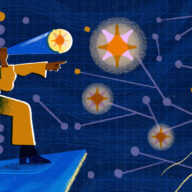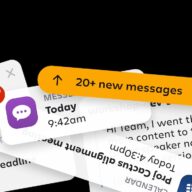I started my career as a consultant, which means being measured in terms of hours worked and charged back to the client. It all seemed quite normal for a while, even though it left me feeling hollow and confused. I was busy, but to what end? What difference were all my emails and status reports making? Then it hit me: the thing I should be measured by is the value I deliver.
Value delivered and time spent don’t always go hand in hand. Quarterly profits and year-over-year growth make sense as productivity measures for businesses, but less so for individuals. The real value my colleagues and I were delivering came from creativity and curiosity and critical thinking – none of which map neatly to billable hours. It was, in many ways, a disservice to our clients because we were incentivized by output instead of outcomes.
For me, this realization came more than a decade ago and I’ve been lucky enough to work in outcome-focused environments ever since. But the fetishization of productivity is still alive and well in many of the companies I work with today. To be fair, this thinking is born of good intentions. Nonetheless, it’s time to un-learn what we think we know about productivity and adopt some new patterns.
“Efficient” and “effective” are not the same thing
Most companies still measure the success of their employees by how efficient they are at getting the job done. For a long time, this was more or less fine. But now, there are risks associated with it.
In the short-term, being efficient makes you look good. You’ll clear the easy things off your to-do list, you’ll get to inbox zero, you’ll respond to pings on Slack, and generally look like you’re getting a lot done. And, you’ll feel little sense of purpose because it’s all mostly transactional. But hey: management is happy.
What knowledge workers really want, however, is to do work that has meaning. We want to solve hard problems and come up with great ideas to run at, and that means working with others. To do the best work, this requires cognitive diversity on your teams and will necessarily invite creative friction. But this is essential for outcomes that actually make a difference. The only catch? It might take longer.
Some people see that as a tax. I see it as an investment.
If all we focus on is efficiency, we’ll go fast but lose sight of where we should be headed. Worse yet, if we realize we’ve been running in the wrong direction, we have to backtrack – which is decidedly inefficient. To be effective and remain relevant, we need to adapt to customers’ needs so we can delight them. And doing that takes even more time.
Burnout is real, and it’s getting worse
All this speedy, ever-efficient, output-based working has another consequence: burnout. It’s happening more frequently, and not just in the high-powered roles at the top of the org chart. A recent Gallup poll found that 23% of full-time employees feel burned out by the end of each week, and it’s taxing our health to the tune of $100+ billion per year. Based on what I’ve seen and heard at companies around the globe, it’s a direct result of the way people are being compelled to work.
Let’s start with the 9-to-5 workday. It’s a remnant of the manufacturing era when people would clock in, work with their hands to produce a bunch of stuff, then clock out. Time equaled output, which equaled value. Today, for billions of knowledge workers, work means using your head and your heart – not your hands. Doing that for eight straight hours daily is mentally and emotionally exhausting in a way that assembly line work just isn’t.
The rise of automation compounds this effect. AI takes away those simple, transactional tasks. All that’s left for knowledge workers is the problem-solving. On a good day, that feels wonderful because we’re engaged in a meaty piece of work. Over time, though, the intense cognitive load takes a toll.
Unless we recognize that time spent recharging counts as productive time, this problem is only going to get worse. In Japan, the problem is already bad enough that there is now legislation in place to limit the number of hours employees can be expected to work and require workers to take at least five vacation days a year. Oof.
A fool with a tool is still a fool
“So Dom,” you may be thinking, “if productivity is dead, do we just up and toss away all our productivity tools? And by the way… doesn’t Atlassian make productivity tools?”
Fear not! There’s still a big role for tools to play.
Consider this analogy. Imagine you’re trying to lose weight. Productivity tools are like eating healthy: you’re not going to lose much weight by eating healthy if you don’t exercise. Tools, like healthy foods, are only part of the answer. They exist to facilitate (and will reinforce) whatever practices you’ve got going on the ground. So the trick is to make sure they’re reinforcing the right practices.
Tools add real value when they’re supporting practices that make us more effective. For example, peer code reviews result in higher quality, more maintainable code. You can do code reviews without any special tooling, and for decades that’s how it was done. But now that we have tools like Crucible and pull requests in Bitbucket, code reviews are both faster and easier. And (bonus!), this means developers do code reviews more consistently. It’s a win for effectiveness and efficiency.
Ingredients for maximum impact
It starts with reflection and adaptation – otherwise known as “continuous improvement.” My go-to hack here is a technique called the 4Ls, which works at the individual, team, or department level. Each quarter, reflect on what you’ve liked, loathed, learned, and longed for in the past few months.
- Whatever you loved, do more of it. Because life is too short.
- Whatever you loathed, look for ways to have less of it.
- Decide how you can apply what you’ve learned, and make a plan to get whatever it is you longed for.
At the company level, we need to embrace flexibility, especially regarding work schedules. Some people’s brains just don’t fully switch on until later in the day, while others’ creative juices peter out by afternoon. To maximize their impact, we need to let them work when they’re going to produce their best work. (Within reason, of course. Setting “core hours” where everyone needs to be on but being flexible otherwise strikes a decent balance.)
We also need to stop obsessing over the number of hours worked. If employees can deliver amazing solutions to complex problems in 34 hours a week, good on them! Give them the remaining six hours to rest, do yoga, play with their kids or dogs – whatever restores their energy and ability to keep delivering amazing work.
As a bonus, embracing flexible schedules and remote work lets companies access smart people whose lives don’t fit neatly into an eight-hours-in-the-office expectation. Single parents, people with disabilities, people caring for elders… they all bring a fresh perspective and add to that all-important cognitive diversity.
Thinking back to my consulting days, we were so focused on delivering work that we forgot to think about the result we were ultimately after. It’s an easy trap to fall into because shipping code or issuing a report or launching a campaign brings immediate gratification. We want another dopamine hit as soon as possible.
I don’t yet know how to measure impact the way we measure a factory worker’s productivity. But I do know we’re better off if we focus on making an impact.
Got a project in the works? Try running a “Goals, Signals, and Measures” workshop with your team to help you stay laser-focused on outcomes and results.
Get free step-by-step instructions
Special thanks to Sarah Goff-Dupont for her contribution to this article.






































